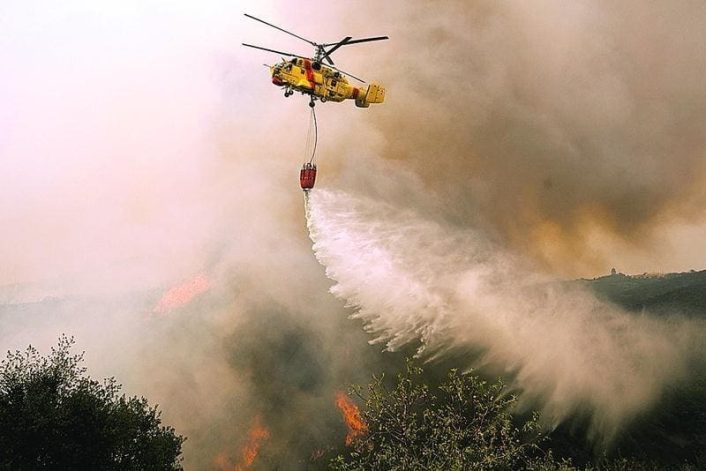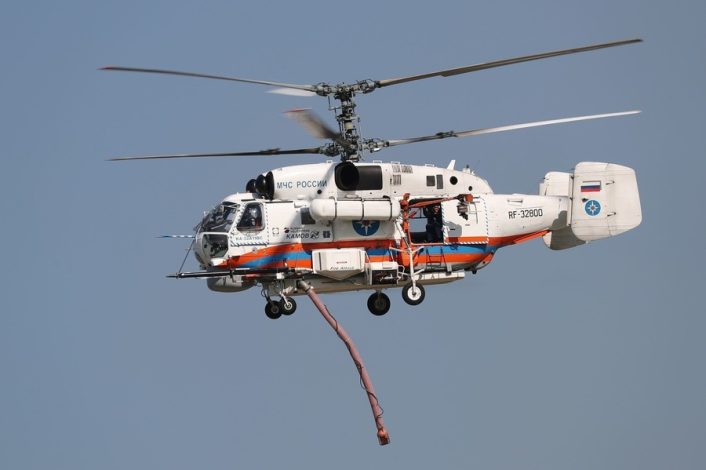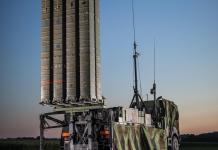Moscow has strongly condemned Portugal’s recent transfer of six Russian-made Ka-32 firefighting helicopters to Ukraine, calling it a “hostile step” that will exacerbate tensions between Russia and Portugal.
The Russian Foreign Ministry delivered a strong rebuke on September 13, days after reports confirmed that Portugal had completed the transfer. The final shipment of helicopters was sent on September 6.
Russia’s Foreign Ministry Spokeswoman Maria Zakharova stated that the decision reflected Portugal’s alignment with the West’s “criminal course” in prolonging the conflict in Ukraine.
“We consider the fact of the transfer of this aircraft to the Kyiv regime as another hostile step against our country in line with the criminal course of the collective West to wage a hybrid war against Russia and prolong the conflict in Ukraine,” Maria Zakharova said.
Russia sees the transfer of these helicopters, originally acquired by Portugal in 2006, as a deliberate provocation.
Zakharova accused Lisbon of losing its foreign policy independence, describing the move as a sign of Portugal’s loyalty to its Western allies.

“Such actions by Portugal indicate an almost complete loss of foreign policy independence and contribute to the further deepening of the crisis in Russian-Portuguese relations, which were once built based on mutual respect and consideration of each other’s interests,” Zakharova added.
Portugal had first announced its intention to send the “inoperable” Ka-32 helicopters to Ukraine in October 2022. The aircraft, previously utilized for firefighting, are no longer certified for operation within Portugal.
Additionally, one of the helicopters had been damaged in an accident. These Ka-32 helicopters had been acquired in 2006 for $350 million but were plagued with operational issues. The helicopters’ maintenance history was also fraught with complications.
In 2017, a Russian maintenance team was expelled from Portugal, and a local maintenance center in Ponte de Sôr was closed due to allegations that the company handling the helicopters’ upkeep had operated them without the necessary identification and authorization.
At that time, Portugal’s Minister of Internal Administration, Eduardo Cabrita, justified the move as being “in defense of the public interest and national interest.”
Delayed Transfer & Operational Uncertainty
Even though the intention to send the helicopters to Ukraine was declared in 2022, it took some time for the non-operational aircraft to be shipped.
By November 2023, more than a year after the initial announcement, the helicopters were still in Portugal. The government was waiting for instructions from their counterparts in Ukraine on how to proceed with the transfer, which caused the delay.
On September 7, a Portuguese defense statement explained that after a prolonged period of uncertainty and negotiations, the current administration, via the Ministry of National Defense (MDN) and in partnership with the Ministry of Internal Affairs, has successfully organized the transportation of the helicopters.
This coordination involved working closely with the Ukrainian Embassy in Lisbon and the Ukrainian Ministry of Defense.
The helicopters had been grounded in Portugal due to a lack of spare parts and maintainability issues. This led to the absence of an airworthiness certificate from Portugal’s aviation authorities, and they were relegated to storage.

When Ukraine expressed interest in receiving them, it was decided that they would be donated in their existing condition without any prior refurbishment.
Ukraine accepted the helicopters as they were, given that they could serve various functions. Although these Ka-32 helicopters are primarily designed for firefighting and rescue missions, they can also be utilized for military and civilian purposes.
There is no specific information on whether Ukraine will put the helicopters into active service or dismantle them for spare parts, though the latter scenario seems likely.
However, in December 2021, Rear Admiral Oleksiy Neizhpapa, then Commander of the Ukrainian Navy, indicated that the Marine Aviation Brigade’s primary goal was to replace the aging fleet of Kamov helicopters with newer, Western-type aircraft.
Kamov Ka-32 Helicopter
Kamov first unveiled the Ka-32A model in 1986, introducing it as a medium-sized helicopter designed for civilian use. The model was a civilian adaptation of the military Ka-27PS based on the earlier Ka-25 and Ka-27 helicopters.
The development of the Ka-32 began in 1969, with the prototype making its maiden flight in 1973. The initial operational version of the Ka-32 took to the skies in October 1980 and was globally showcased for the first time at the Paris Air Show in 1985.
Originally designed for reconnaissance missions over Arctic regions, the Ka-32A underwent significant enhancements to expand its capabilities.
By 1990, it was engaged in multiple functions, such as search and rescue missions, emergency response activities, cargo transportation, and naval support. This improved version expanded its functionality, demonstrating adaptability across various essential operations.
Specialized versions of the Ka-32 have been developed to address specific operational needs. For example, the Ka-32A1 and the Ka-32A11BC (the model being transferred from Portugal to Ukraine) were tailored for emergency and firefighting operations.

Thanks to its coaxial rotor configuration, the Ka-32A11BC boasts a high power-to-weight ratio and is easy to handle. The absence of a tail rotor and tail boom means the rotors’ diameters are unrestricted, enhancing their ability to maneuver in tight spaces and ensuring exceptional precision when hovering in challenging conditions such as heavy smoke and dust.
Additionally, the Ka-32A11BC can be fitted with a Bambi Bucket fire-fighting system, which can carry up to five tons of water.
South Korea also operates nearly 60 Ka-32 helicopters across various sectors. The Forest Aviation Headquarters relies on these choppers primarily for firefighting operations, while the Armed Forces utilize them for search-and-rescue missions.
The country’s coast guard also relies on Ka-32s to patrol inshore waters. Commercial operators also use these helicopters for a wide range of tasks, including cargo transportation, construction work, logging, and other activities.
- Contact the author at ashishmichel(at)gmail.com
- Follow EurAsian Times on Google News




